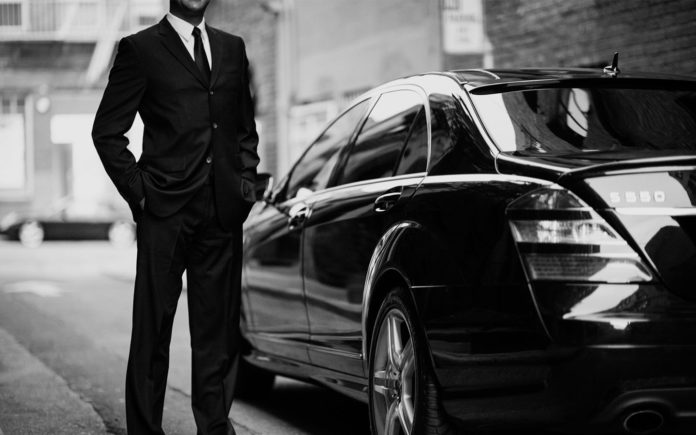
Uberization, Noun.
A process where a high-tech middleman replaces past intermediaries.
It was in 2009 that an upstart, a small company called Uber, disrupted the taxi ride business. By leveraging technology to reach a wide swath of consumers and stretching the definition of employees, Uber was able to shift the cab industry significantly off gear.
The question that many consumer-facing service franchisors are now asking is: Is my franchise next? The short answer: yes and no.
Scott Amyx, the CEO at Amyx+, points out the shared or “gig” economy is already creating ripples in franchising. For example, Savvy.is disrupts the tutoring and expert market by creating a platform for anyone in the world to look for an expert and seek advice through the Internet by means of a half-hourly consultation. YourMechanic provides car repair quotes, schedules and sends a non-employee mechanic to a consumer’s home to repair the car inside a garage or location of choice.
According to Amyx, the biggest risk for service franchises is that they bear the overhead cost of running a physical operation such as lease, equipment, utilities, employees, etc. But the good news is that franchises can adapt—and are doing so—in the face of such disrupters. Here’s how.
One of the things Uber does well is make a ride easily available and accessible. This simplicity of scheduling services is something that franchises are taking seriously.
For example, The Cleaning Authority, headquartered in Columbia, Maryland, has worked on a consumer-facing, mobile-friendly website that makes it really easy for customers to schedule a service such as a cleaning or in-home estimate.
These online scheduling tools are also integrated with the franchisee’s calendar so all outlets are synchronized. This method is helpful not just for consumers, but it also allows franchisees to focus on the actual work instead of wasting time on administrative matters, said Heather McLeod, director of marketing at The Cleaning Authority.
The customer portal facilitates checking of past visits and related information, such as what will be cleaned during the next visit. Automatic payment options and reward program credits can also be monitored through a single secure portal, McLeod said.
Camp Bow Wow, a franchise headquartered in Broomfield, Colorado, and devoted to dog daycare and related services, is exploring partnerships with technology companies such as Rover.com to figure out delivery on demand.
“We’re making sure we’re as innovative and high-tech as possible. Especially these days, when people want everything as quickly and efficiently as possible, you have to have technology to help you do that,” said Heidi Ganahl, CEO. Camp Bow Wow already has online mechanisms for customers to upload vet records and related information.
Transparency Rules
Just as customers can track the route and estimated time of arrival for Uber, so too can consumers now get better and more seamless peeks at the inner workings of some of today’s service-oriented franchises.
The New York-based franchise BookATailor creates bespoke shirts and suits for men. BookATailor’s vertically integrated system—right from electronic order-taking to the final manufacture in Thailand—is sewn together so seamlessly that a customer can check on order progress through a secure online portal that tells exactly which stage a particular order is in.
The Uber method of service delivery is also about finding the right customers and delivering the service where and how they want.
Franchises such as Sylvan Learning, headquartered in Baltimore, Maryland, are using technology to do just that. Company research found that a little more than 50 percent of students live within a four-mile radius, and 80 percent within ten miles. To reach those students who might not be able to get to Sylvan’s brick-and-mortar centers, the franchise has instituted a satellite program that facilitates tutoring at places outside the center such as schools or libraries. Sylvan’s use of iPads and other mobile devices has greatly helped with this outreach, said Sasha Shultz, chief product officer.
BookATailor has physical showrooms as part of the franchise and has achieved success through the use of a SmartCar, which drives around a city and reaches customers where they are. The company’s CEO Jacomo Hakim said he tried a mall kiosk and was frustrated that he was not reaching the customers he desired.
The BookATailor car is outfitted with a mannequin and attention-grabbing banner wrap. A swatch book, iPad and measuring tape are all that are needed to get going. Hakim said franchises have to be nimble to stay ahead and BookATailor even moves its cars around during lunch hour to target the right prospects. Through BookATailor’s app for Android, customers can also request a SmartTailor, a visit by the SmartCar to a location of their choice.
In all cases, franchises take special care to not let the mobile units drive traffic away from the brick-and-mortar locations. “There will always be people who prefer one model over the other,” Hakim said. “This way we just reach more customers and deliver what they’re looking for.”
Franchises point out not everything can be readily commoditized like a cab ride. McLeod of The Cleaning Authority said not all services are as straightforward as what Uber offers. “We’re actually talking about entering a person’s home. So there’s a different level of comfort and expectation and that’s one of the things that I think will be a stumbling point for some of these companies like Handy,” she said, referring to a disruptor in the cleaning space.
Franchises have numerous advantages—brand presence, marketing and consistency—that disrupters will find hard to compete against. McLeod said while there are others who are using technology to mobilize independent service providers, much like Uber does, that alone won’t be enough.
“We use technology to stay ahead of disrupters and we combine that with consistency of service that others just can’t do. From market to market we have provided consistency and that really gives us a competitive advantage that can’t be replicated.”
“For brick and mortar and other traditional businesses in various verticals, to be relevant, they must become agile and morph or risk obsolescence,” Amyx said.
Refer to the full article on FT. Published on April 5, 2016. Author Poornima Apte.


















